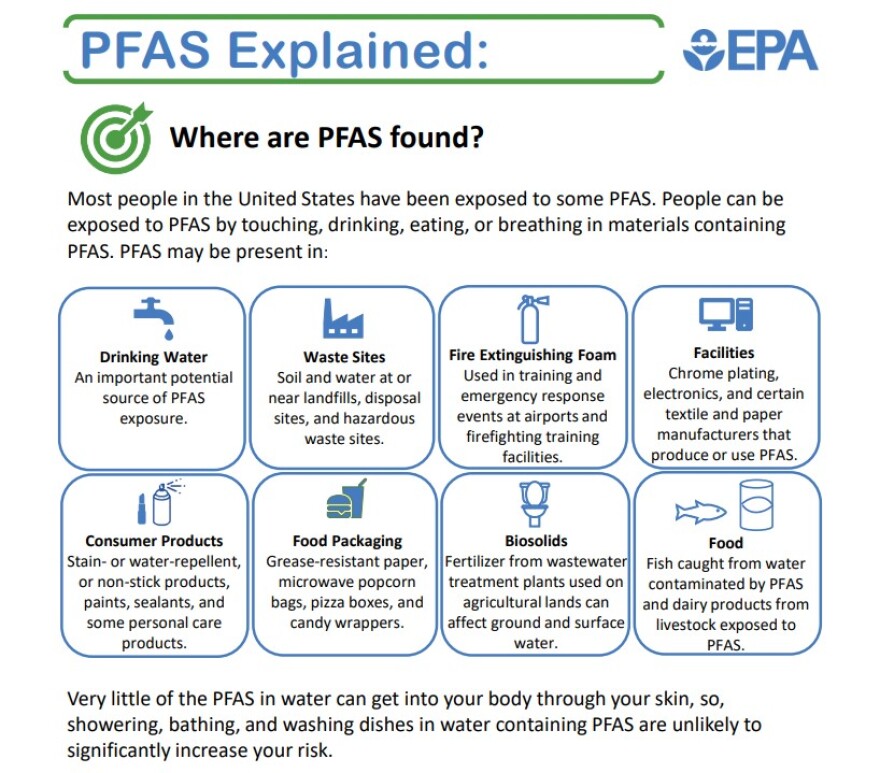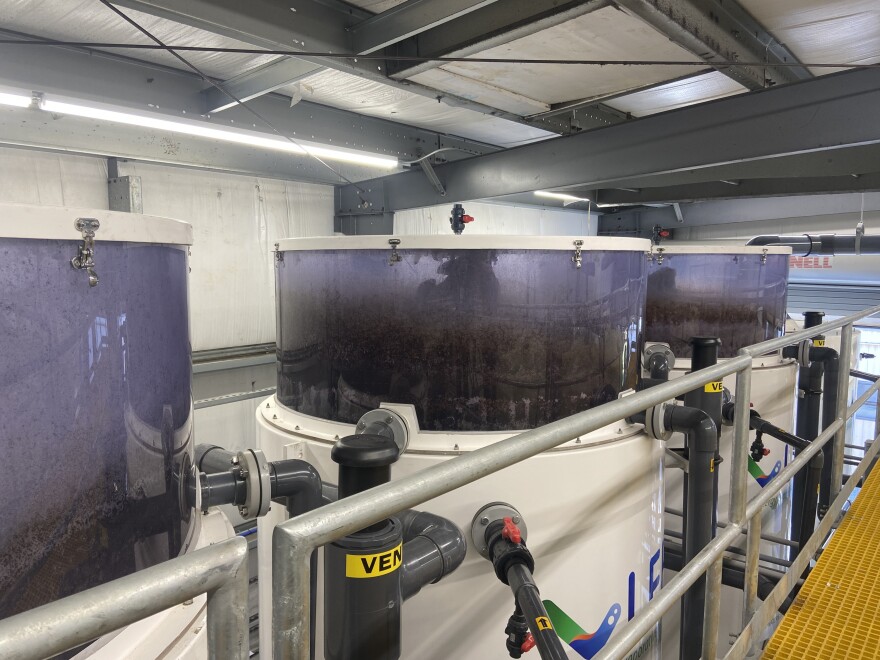LOWER SAUCON TWP., Pa. — A first-of-its-kind treatment plant targeting PFAS, also known as forever chemicals, in the United States now has run in the township for almost a year.
And it’s “performing exactly as intended,” Bethlehem Landfill District Manager Astor Lawson said in an email.
Bethlehem Landfill officials in mid-November cut the ribbon on the new, $2 million treatment plant for per- and poly-fluoroalkyl substances, or PFAS, at 2543 Applebutter Road.
“We’re setting the standard for how modern landfills can take meaningful action on this emerging environmental challenge.”Astor Lawson, Bethlehem Landfill’s district manager
The plant, in operation since July, uses the LEEF System, developed by Australian-based environmental health services company The Water & Carbon Group, to separate "forever chemicals" from water using air.
“Bethlehem Landfill is proud to be leading the way as one of the first landfills in the nation to invest in and operate advanced PFAS treatment technology,” Lawson said.
“We’re setting the standard for how modern landfills can take meaningful action on this emerging environmental challenge.”
‘Forever chemicals’ in the Lehigh Valley
PFAS are a group of manufactured chemicals that have been used in consumer products since the 1940s.
They have been nicknamed “forever chemicals” because they are incredibly slow to break down once introduced into the environment and can contaminate groundwater.
They have been linked to a variety of health problems, including liver and immune-system damage and some cancers.

“PFAS … are man-made chemicals that are found in all kinds of everyday products that consumers use — like non-stick pans, fast-food wrappers, raincoats and even some shampoos and dental floss,” Astor said.
“Because consumers throw these items in the trash, PFAS end up in landfills like ours. That’s why we say we’re a passive receiver — we don’t create PFAS. However, we’re proud to have implemented a proactive solution to manage and treat them responsibly.”
In the Lehigh Valley alone, PFAS have been recorded in at least five streams, and Emmaus’ efforts to remediate contaminated wells have been costly and well-documented.
The U.S. Environmental Protection Agency, as well as the commonwealth, have in recent years set new standards for PFAS concentrations in drinking water, with local environmental advocates lauding the effort.
However, EPA officials last week announced plans to weaken limits.
PFAS treatment
At the landfill, PFAS show up in the raw leachate, or water that has flowed through garbage in the landfill.
The LEEF, or Low Energy Evaporative Fractionation, system removes PFAS from the leachate using a process called foam fractionation.
As water flows into a series of three towering cisterns, air is pumped in to separate out “forever chemicals,” creating a foam.
Over a series of stages, 99% of PFAS are removed from up to 100,000 gallons of leachate per day.
The forbidden cotton candy 😋
— Molly Bilinski, artisanal sentence crafter (@MollyBilinski) November 18, 2024
(Seriously tho — this is PFAS 🤮) pic.twitter.com/kSckF087Ef
Once the foam is collected, it gets concentrated down before its final disposal — solidified and sequestered in the landfill.
“To date, no solidified PFAS concentrate has been disposed of because the volume collected has not yet reached the threshold requiring disposal,” Astor said.
“It is currently being stored, which is a normal part of the treatment and handling process.”
Asked how much PFAS concentrate has been collected so far, officials said, there “has not been enough concentrate collected to require disposal.”
For more information, go to the landfill’s website.


